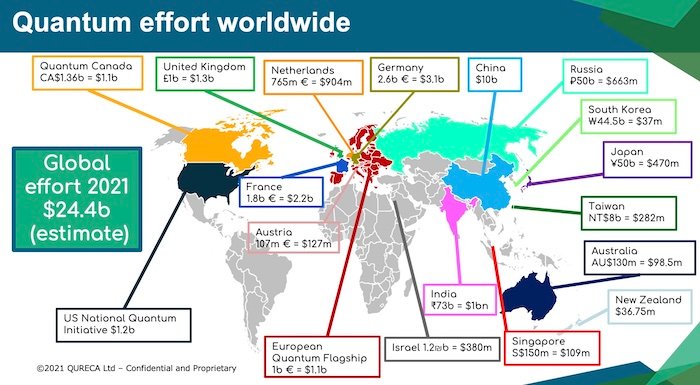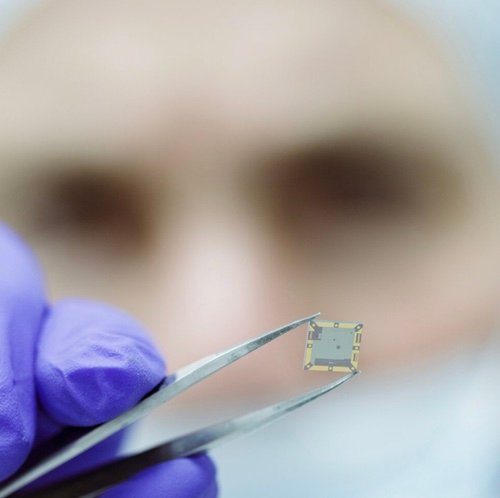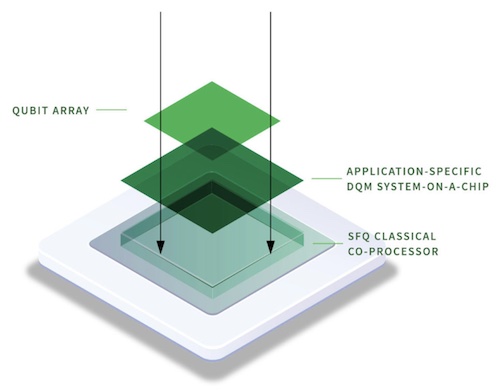The push towards creating quantum technology has been ramping up more and more each week.
To keep the quantum ball rolling, the UK and USA recently signed a joint statement intended to increase collaboration on quantum science and technology.
This collaboration aims to promote concerted research for quantum technology-related discoveries, build a relevant global market chain, and educate the next generation of scientists and engineers on the technology.
Overall, the statement further strengthens the UK's drive for rapid commercialization and widespread adoption of next-gen quantum computing.

The global investment into quantum technology. Image used courtesy of QURECA
Moreover, through its National Quantum Technology Programme (NQTP), the UK has already released funding for twelve quantum projects, with Oxford Instruments Nanoscience partnering with other industry leaders on three key projects.
In addition to unpacking what Oxford Instruments Nanoscience is trying to achieve, this article will explore the capabilities and roles of each partner.
Overview of Oxford Instruments Nanoscience’s Partnerships
Oxford Instruments Nanoscience, an industry-leading manufacturer and supplier of quantum technology-enabling tools, recently announced collaborations with SeeQC, Quantum Motion, and sureCore on three separate projects to aid the rapid commercialization and widespread adoption of quantum technologies. These collaborations aim to advance the development of quantum computing solutions for enterprise applications. The company will leverage its long-standing history and expertise in complex technology delivery to partner with these industry leaders to develop quantum technology-intensive solutions for many industries, including pharmaceuticals.
The first project is a SeeQC-led Industrial Strategy Challenge Fund (ISCF) QuPharma project, which received £6.8M (roughly $9,052,534) funding for developing an application-specific or ASIC quantum computer to revolutionize drug research and development. The principal objective of this project is to scale up the speed and accuracy of drug discovery.
Since the capabilities of existing supercomputers used for drug-related research barely meet industry requirements, there is a significant need for quantum computing. In addition to meeting this need, this SeeQC-led project aims to manufacture a quantum computer platform for a German-based quantum computer company, Merck, by harnessing cryogenic engineering expertise.

An example SoC from SeeQC. Image used courtesy of SeeQC
The second project is Altnaharra with Quantum Motion. Similarly, with Altnaharra, a £5.7M (roughly $7,587,412) funded project, Oxford Instruments Nanoscience partnership with Quantum Motion aims to develop a superconducting circuit, ion trap, and spin qubit-based quantum technology with capabilities of expediting quantum computing development in the UK. The standard complementary metal-oxide-semiconductor (CMOS) foundry-manufactured cryogenic chips from this project will enable the entire quantum computing industry, as they can function near absolute zero, which has been a significant setback towards mainstreaming quantum computing.
The final project that Oxford will be supporting is a sureCore-led £6.5M (roughly $8,651,792) funded project to promote quantum computing development by supplying cryogenics design expertise for facilitating new design rule-based cryo-CMOS solutions. A key objective of this project is to efficiently handle quantum computer production scaling-related challenges, including the manufacture of electronics compatible with ultra-cold temperatures.
Overall, Oxford seems to be selecting projects that help tackle significant roadblocks in furthering quantum computing as a whole. Now that we have the gist of what Oxford hopes to gain from these partnerships, let's dive into what each company brings to the table to make these projects a reality.
SeeQC's SoC Solution
SeeQC is a US-based manufacturer of cost-effective and commercially-scalable quantum computing solutions. The company aims to make significant advances in quantum computing by delivering digital chip-scale function integration beneficial for system complexity, cost, and I/O count minimization.
It offers a comprehensive range of quantum tech-related fabrication services that have led to the design of at least 5,000 unique superconductive chips.
Some of these services include:
- Nanofabrication
- Superconducting sensor processes (ie., Transition-Edge Sensor (TES) and Superconducting Nanowire Single-Photon Detector (SNSPD))
- Wafer-level custom fabrication
- Superconducting and non-superconducting multichip module processes
This year, the company revealed its breakthrough in achieving a quantum operating system that harnesses its innovative chip-scale integrated quantum computing architecture. In partnership with UK-based Riverlane, this SeeQC discovery ensures the significant miniaturization of quantum technology at low latencies for rapid commercialization. Furthermore, SeeQC’s digital quantum management (DQM) system-on-a-chip (SoC) could serve as a bridge for quantum applications and algorithms.

SeeQC’s DQM SoC. Screenshot used courtesy of Seeqc
In addition to ensuring unprecedented scalability and cost-effectiveness in quantum technology, this chip-based management function integration promises to deliver new quantum computing functionalities. The company harnessed its world-class chip fabrication foundry to develop 3D multichip systems by combining existing fabricated application-specific circuits with the DQM SoC.
Quantum Motion’s Latest Innovation on CMOS Chips
Quantum Motion specializes in the design of quantum computing architecture compatible with conventional silicon processing, i.e., the company achieves quantum computing capabilities in classical computing materials, such as silicon. However, the company considers ultra-scalability in its designs to achieve stamp-sized qubit technologies. Thus, developing a quantum computing tech ideal for handling complex problems in various fields, including medicine, chemistry, and artificial intelligence.
Recently, Quantum Motion achieved a CMOS chip-based integrated readout of quantum dots.

Quantum Motion's CMOS-based cryogenic IC. Image used courtesy of Quantum Motion
Quantum Motion's CMOS technology-based cryogenic IC comprises three key elements:
- quantum dot arrays
- dedicated digital electronics
- analog LC resonators
While the chip offers an overall footprint minimization, it can perform a dispersive charge state readout of the quantum dots (QDs). By integrating these subsystems (quantum computing and classical electronics) at deep cryogenic temperatures, Quantum Motion can efficiently tackle size and I/O data management-related challenges, eliminating the limitations to large-scale silicon-quantum computing realization.
CryoCMOS IP: Low Power Quantum Computing with SureCore
SureCore is an intellectual property (IP) company that offers other industry leaders design flows and low power engineering methodologies that help them meet stringent power budgets. The company ensures the IC design community meets power and exacting memory requirements in their designs by providing low-power mixed-signal design and low-power static random-access memory (SRAM) IP services.
SureCore’s technology aims to solve low-power SRAM-related challenges, which account for about 70% of operating power. Thus, the company has garnered expertise and experience over the years to ensure efficient static and dynamic power consumption across a wide range of applications and devices.
CryoCMOS IP, the brainchild of SureCore, is a design that can adequately expedite the widespread adoption of quantum computing. This IP is meant for low-temperature operations on which quantum computing applications depend. Additionally, this IP promises to handle issues with connecting qubits with their relevant control electronics.
Since these control electronics (conventional CMOS process technologies) efficiently operate in a limited temperature range (-40° C to 125° C), cabling them for quantum computing applications can be challenging. However, with the CryoCMOS IP, designers could achieve seamless cabling, as the solution can operate in temperatures as low as 4° K.
Some key capabilities this IP offers include:
- Minimal power dissipation
- Standard cell library
- Reduced thermal load on the cryostat
- Low operating temperature range (down to 4° K or -269.15° C)
Pushing for Better Quantum Computing
With Oxford Instruments Nanoscience partnering with these three projects and companies, the realm of quantum computing can benefit from:
- SeeQC’s DQM SoC that can ensure high quantum computing scalability and fabrication cost-effectiveness
- Quantum Motion’s CMOS tech-based cryogenic IC that can eliminate large-scale silicon-quantum computing limitations
- SureCore’s CryoCMOS IP that can enable the design of low-temperature-compatible CMOS process technologies
By partnering with these companies and innovations, the commercialization and large-scale adoption of quantum computing could be closer to the horizon.
